Copper pipes are widely used in most home plumbing systems. If you're planning to add new water lines to your home but don't know what size to install, then you came to the right page! We gathered significant information about this subject, and here is what we learned.
Typically, the main pipe's size from the street to your home is either 3/4" or 1" and the diameter of the supply pipes is 3/4". However, the sizes of your copper pipes inside the house can vary depending on the fixture(s) you want to connect your waterline to.
Here is a detailed guide on what size to use for some fixtures:
|
Copper Pipe Size |
Fixture Connected |
|
3/8" |
|
|
1/2" |
|
|
3/4" |
|
Continue reading as we discuss the types of copper pipes and where to use them. In addition, we'll help you size your water lines. We'll also share different ways to connect copper pipes and how to do them. So, read on!
What Are The Types Of Copper Pipes And Where To Use Them?
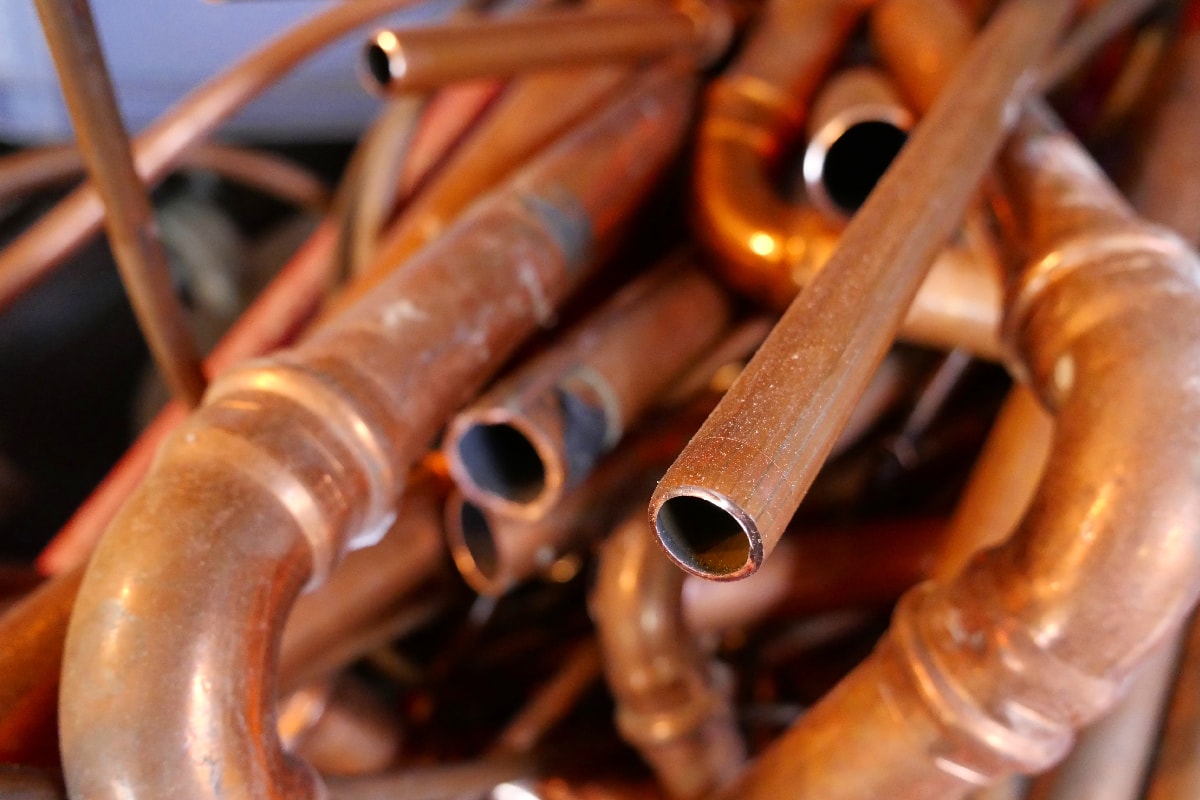
These are the types of copper pipes most commonly used for waterlines:
Copper Pipe |
Description |
Thickness (1/2" to 3/4" pipes) |
Applications |
|
K |
|
|
|
|
L |
|
|
|
|
M |
|
|
|
Why Are Copper Pipes Popular In Plumbing Systems?
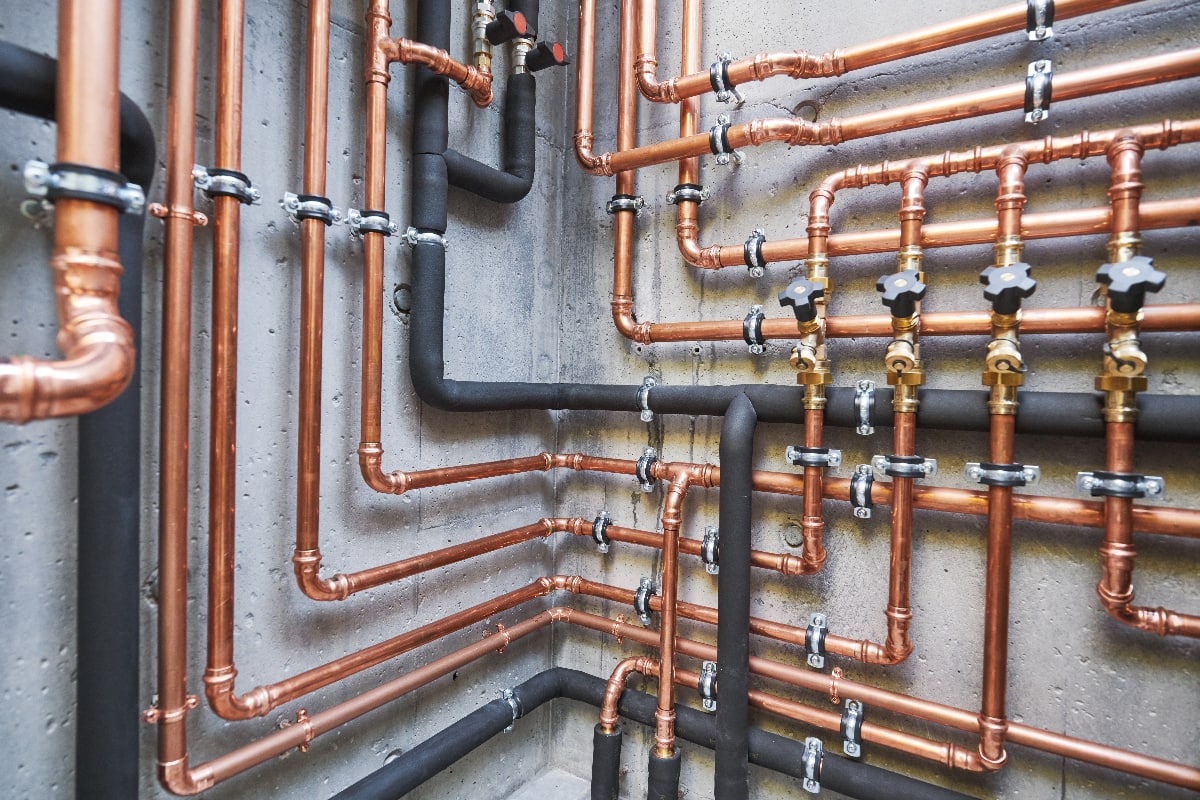
If you're wondering why copper pipes are usually used in plumbing systems, these are some of the reasons:
- Copper was the first alternative to lead-free piping materials, and it remains a and long-lasting piping system solution.
- Copper is entirely impermeable.
- Especially for cold climate applications, copper can endure freezing temperatures without cracking.
- Copper does not corrode.
- Environmentally friendly copper can be recycled when a piping system is repaired or replaced. And recycled or repuprpsed copper returns 80-90% of its original value.
What Are The Ways To Connect Copper Pipes?
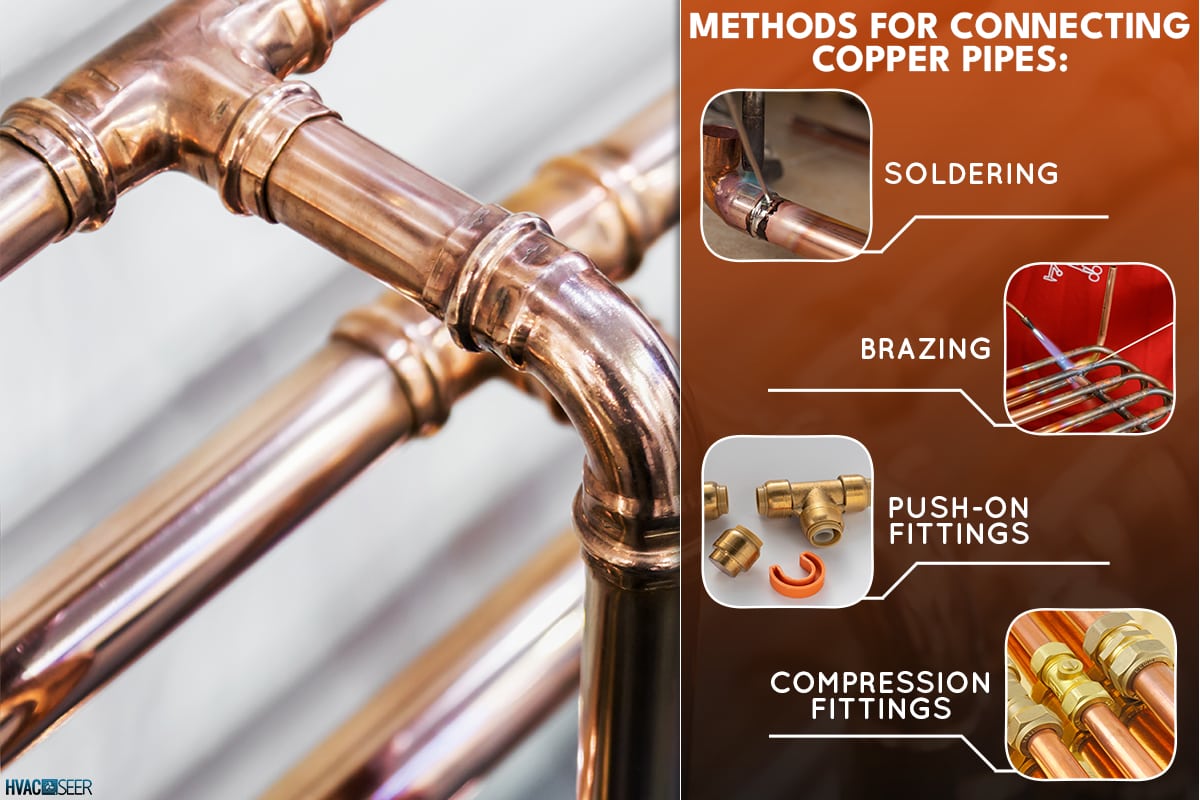
There are several ways to connect copper piping. The most common method is soldering. But you can also opt to braze or use fittings such as push-on and compression fittings.
Soldering
Soldering or "sweating" creates a watertight seal, so it is readily used as a repair option on copper piping. The filling material, pipe flux, seeps into the tiny cracks and crevices to ensure a tight bond between copper and wire solder.
Brazing
This bonding method uses only heat to join metals, but a vacuum chamber is essential to perform the work ensuring no residual air molecules interfere. Brazing is best used to connect copper pipes, but it's not a typical solution.
Push-On Fittings
Push-on fittings can be expensive, but they don't require the expertise necessary for soldering. These will provide a watertight result without any structural benefit using a pre-sized diameter connector piece with a fitted O-ring and clamping "teeth" to secure to the copper pipe.
Push-on fittings are a good solution for DIY pipe repairs as you'll need only one tool to install and/or remove them.
Click here for this product on Amazon.
Compression Fittings
Again, no need for soldering if you use compression fittings as they form a tight seal between pipes by tightening a brass ring with a nut. You'll need wrenches for this if doing the job yourself and compression fittings can prove an affordable solution to pipe connections or repairs.
How To Solder Copper Pipes
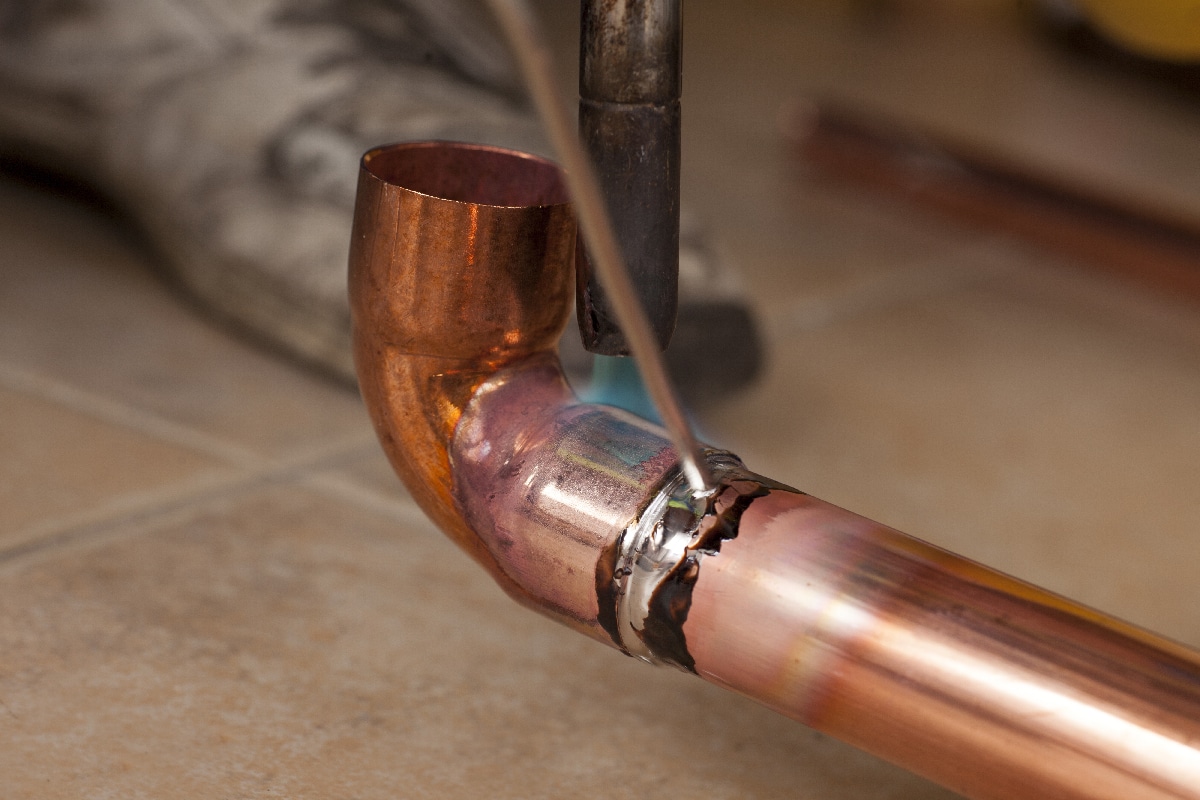
To connect copper pipes by soldering them, you can follow this simple guide:
- Get the pipe ready. Remove the copper oxide layer from the fitting's inside as well as the exterior of the tubing that will be placed into it. For this, you can use sandpaper, emery cloth, or specialized tools available in stores.
- Soon after cleaning, apply solder flux to the cleaned surfaces and join the fitting and tubing. The copper tube should have flux applied both inside and out.
- Ignite the torch and set the flame until it is blue. Move the blue flame's end around the components in the area where the solder needs to be inserted while you press it against the connected fitting and tubing.
- Heat slowly and uniformly while maintaining steady motion, then test the solder's melting point by touching the joint with the solder wire's tip.
- As you continue to feed little amounts of solder and move the torch to the side opposing the melting solder, the solder will eventually circle the fitting.
- Apply a clean, dry cotton towel to the heated surfaces to remove any excess liquid solder. To stop the solder from moving and causing a leak, spritz some water onto the area that has been soldered.
- To remove any extra liquid solder from the heated surfaces, use a clean, dry cotton cloth. Spray some water on the soldered region to prevent the solder from shifting and causing a leak.
How To Braze Copper Pipes
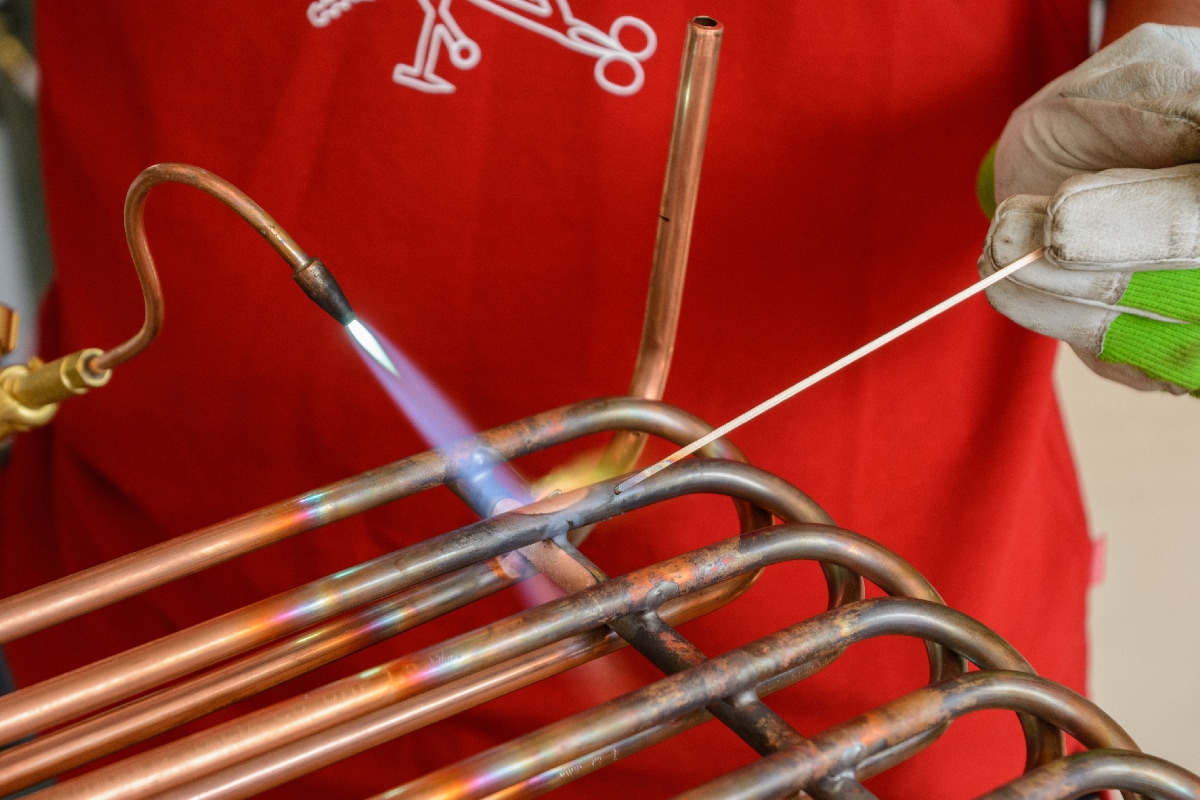
To braze copper, you need to:
- Heat the copper.
- Next, coat it with constantan.
Click here for this product on Amazon.
- Properly line up the pipes and heat them to 482 ºF so the pipes will fuse.
- Apply some brazing solder paste after they've been heated; it will melt when they're heated again, completing the junction.
Click here for this product on Amazon.
Note: You can also use a flux-covered brazing rod if constantan doesn't offer enough thermal conductivity or if you want to be sure that both components are nearly the same temperature before applying heat for the initial time.
How Do You Measure The Size Of Copper Pipes?
You can easily find the size of your copper pipes by checking them since it is written in the body.
But, if there are no markings, you can use the string method to measure. To do this method, you need to prepare the materials:
- strings
- marker
- ruler
- the copper pipe you want to measure
After securing the materials needed, you can now proceed to measure the pipe.
First, wrap the string once around the pipe to determine its circumference. Mark the place on the string where the overlap begins.
Then, on a level area, spread the string out. Using a ruler and the mark on the string as a guide, determine the string's length after it has been wrapped around the pipe.
The outer diameter of your copper pipe is equal to the length divided by 3.143 (π). Simply deduct 1/8" from the pipe's outside diameter to determine the nominal pipe size (NPS).
When Should You Not Use Copper Pipes In Your Plumbing System?
If you reside in a region with lower pH levels, you must test and monitor the water quality. When the water's pH is 6.5 or lower, the Centers for Disease Control and Prevention advises against using copper pipes.
In certain parts of the nation, this level might be higher or lower. To be sure, confirm with your neighborhood permitting agency.
The pH can also be increased to appropriate levels by using acid neutralizers.
In Summary
Copper is a very popular plumbing material. The most common sizes used for water lines range from 1/2" to 1". You can use it from your supply lines to your branch lines.
When connecting your pipes, you can choose to solder, braze, or use joint fittings to join them.
Before you go, you can check out our other articles here:




